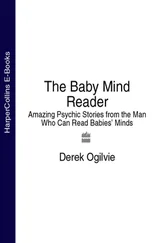Monoamine Oxidase (MAO): The brain and liver enzyme that normally breaks down the catecholamines norepinephrine, serotonin and dopamine.
Motor Neuron: A neuron that carries information from the central nervous system to the muscle.
Myasthenia Gravis: A disease in which acetylcholine receptors on the muscle cells are destroyed, so that muscles can no longer respond to the acetylcholine signal in order to contract. Symptoms include muscular weakness and progressively more common bouts of fatigue. Its cause is unknown but is more common in females than in males and usually strikes between the ages of 20 and 50.
Myelin: Compact fatty material that surrounds and insulates axons of some neurons.
N
Nerve Growth Factor: A substance whose role is to guide neuronal growth during embryonic development, especially in the peripheral nervous system.
Neuron: Nerve cell. It is specialized for the transmission of information and characterized by long fibrous projections called axons, and shorter, branch-like projections called dendrites.
Neurotransmitter: A chemical released by neurons at a synapse for the purpose of relaying information via receptors.
Nociceptors: In animals, nerve endings that signal the sensation of pain. In humans, they are called pain receptors.
Norepinephrine: A catecholamine neurotransmitter, produced both in the brain and in the peripheral nervous system. It seems to be involved in arousal, reward and regulation of sleep and mood, and the regulation of blood pressure.
O
Organelles: Small structures within a cell that maintain the cells and do the cells' work.
P
Pain Asymbolia: People with this condition do not feel pain when, for example, stabbed in the finger with a sharp needle. Sometimes patients say they can feel the pain, but it doesn't hurt. They know they have been stabbed, but they do not experience the usual emotional reaction. The syndrome is often the result of damage to a part of the brain called the insular cortex. The stabbing sensation is received by one part of the brain. But the information is not passed on to another area, the one which normally classifies the experience as threatening and triggers - through the feeling of pain - an avoidance reaction.
Parasympathetic Nervous System: A branch of the autonomic nervous system concerned with the conservation of the body's energy and resources during relaxed states.
Parietal Lobe: One of the four subdivisions of the cerebral cortex. It plays a role in sensory processes, attention and language.
Peptides: Chains of amino acids that can function as neurotransmitters or hormones.
Periaqueductal Gray Area: A cluster of neurons lying in the thalamus and pons. It contains endorphin-producing neurons and opiate receptor sites and thus can affect the sensation of pain.
Peripheral Nervous System: A division of the nervous system consisting of all nerves not part of the brain or spinal cord.
Phantom Limbs: People who lose a limb through an accident or amputation sometimes continue to feel that it's still there. In his book, Phantoms In the Brain, Prof. Ramachandran suggests these sensations may be the result of the brain forming new connections. He describes how, when he used a cotton bud to stroke the face of the face of a young amputee, the patient felt his missing hand was being touched as well. The area of the brain that receives sensations from the hand is right next to the one dealing with the face.
Phosphorylation: A process that modifies the properties of neurons by acting on an ion channel, neurotransmitter receptor or other regulatory molecule. During phosphorylation, a phosphate molecule is placed on another molecule resulting in the activation or inactivation of the receiving molecule. It may lead to a change in the functional activity of the receiving molecule. Phosphorylation is believed to be a necessary step in allowing some neurotransmitters to act and is often the result of second messenger activity.
Pineal Gland: An endocrine organ found in the brain. In some animals, it seems to serve as a light-influenced biological clock.
Pituitary Gland: An endocrine organ closely linked with the hypothalamus. In humans, it is composed of two lobes and secretes a number of hormones that regulate the activity of other endocrine organs in the body.
Pons: A part of the hindbrain that, with other brain structures, controls respiration and regulates heart rhythms. The pons is a major route by which the forebrain sends information to and receives information from the spinal cord and peripheral nervous system.
Q
Qualia: A term for subjective sensations. In Phantoms In The Brain, Professor Ramachandran describes the riddle of qualia like this: How can the flux of ions and electrical currents in little specks of jelly the neurons in my brain generate the whole subjective world of sensations like red, warmth, cold or pain? By what magic is matter transmuted into the invisible fabric of feelings and sensations?
R
Receptor Cell: Specialized sensory cells designed to pick up and transmit sensory information.
Receptor Molecule: A specific molecule on the surface or inside of a cell with a characteristic chemical and physical structure. Many neurotransmitters and hormones exert their effects by binding to receptors on cells.
Reuptake: A process by which released neurotransmitters are absorbed for subsequent re-use.
Rod: A sensory neuron located in the periphery of the retina. It is sensitive to light of low intensity and specialized for nighttime vision.
S
Second Messengers: Recently recognized substances that trigger communications between different parts of a neuron. These chemicals are thought to play a role in the manufacture and release of neurotransmitters, intracellular movements, carbohydrate metabolism and, possibly, even processes of growth and development. Their direct effects on the genetic material of cells may lead to long-term alterations of behavior, such as memory.
Sensitization: A change in behavior or biological response by an organism that is produced by delivering a strong, generally noxious, stimulus.
Serotonin: A monoamine neurotransmitter believed to play many roles including, but not limited to, temperature regulation, sensory perception and the onset of sleep. Neurons using serotonin as a transmitter are found in the brain and in the gut. A number of antidepressant drugs are targeted to brain serotonin systems.
Short-Term Memory: A phase of memory in which a limited amount of information may be held for several seconds to minutes.
Stimulus: An environmental event capable of being detected by sensory receptors.
Stroke: The third largest cause of death in America, stroke is an impeded blood supply to the brain. It can be caused by a blood clot forming in a blood vessel, a rupture of the blood vessel wall, an obstruction of flow caused by a clot or other material, or by pressure on a blood vessel (as by a tumor). Deprived of oxygen, which is carried by blood, nerve cells in the affected area cannot function and die. Thus, the part of the body controlled by those cells, cannot function either. Stroke can result in loss of consciousness and brain function, and death.
Sympathetic Nervous System: A branch of the autonomic nervous system responsible for mobilizing the body's energy and resources during times of stress and arousal.
Synesthaesia: A condition in which a person quite literally tastes a shape or sees a colour in a sound. This is not just a way of describing experiences as a poet might use metaphors. Synaesthetes actually experience the sensations.
Synapse: A gap between two neurons that functions as the site of information transfer from one neuron to another.
Читать дальше











![John Bruce - The Lettsomian Lectures on Diseases and Disorders of the Heart and Arteries in Middle and Advanced Life [1900-1901]](/books/749387/john-bruce-the-lettsomian-lectures-on-diseases-and-disorders-of-the-heart-and-arteries-in-middle-and-advanced-life-1900-1901-thumb.webp)
